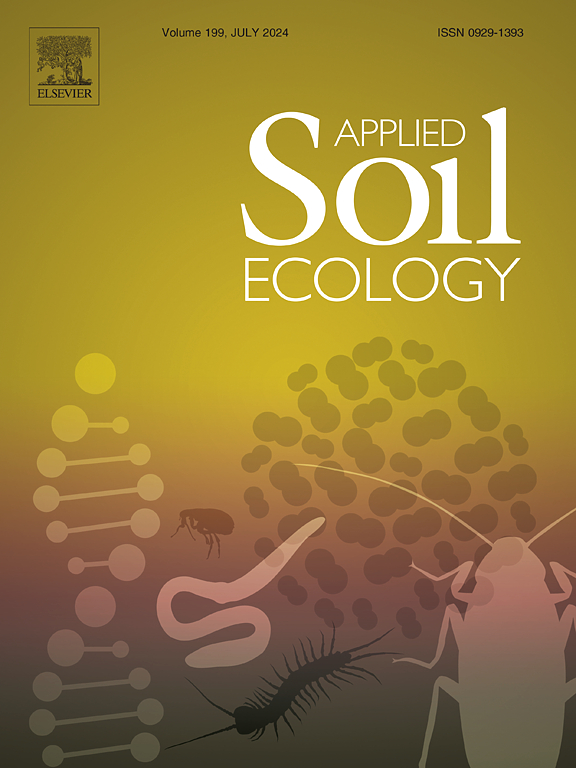Effects of biopedturbation by European badger Meles meles on the forest soil food web persist for years as revealed by nematode indicators
IF 4.8
2区 农林科学
Q1 SOIL SCIENCE
引用次数: 0
Abstract
The European badger lives in burrows, the construction of which involves bringing large amounts of soil to the surface (rising mounds). Previous studies have demonstrated that the presence of such biopedturbation in temperate forests increases small-scale habitat heterogeneity, which favours the maintenance of plant species richness. This study aimed to assess the impact of badger burrowing on soil nematodes and, through nematode-based indices, also on soil food web structure. The study was conducted in the Kampinos Forest (Poland) and included three burrow sites. At each site, four sampling plots were established to represent the following disturbance categories: soil mounds at active burrow entrances (young mounds), soil mounds at entrances that had not been used for 1–2 years (mid-aged mounds) or at least 5 years (old mounds), and the undisturbed area (control). Soil samples were characterized for nematode abundance, diversity and composition. For each sample, indicators of food web maturity, structure, enrichment and decomposition pathways, as well as metabolic footprints, were calculated based on the abundances of nematode functional guilds. Badger burrowing did not affect the total abundance of nematodes, but significantly increased their taxonomic diversity. There were 1.5–1.8 times more taxa in the mound plots than in the control. There was also a significant shift in the composition of the nematode community from one dominated by Acrobeloides nanus, a bacteria-feeding species, to one in which several taxa from different trophic groups played an important role. Some disturbance-induced changes were short-lasting; the relative abundance of nematodes with short life cycles increased significantly after disturbance, and then decreased with disturbance age (from young to old mounds) to the baseline levels (control). Other changes were long-lasting; predatory nematodes, which were almost absent in the control area, appeared in significant numbers in young mounds and did not decrease with age of disturbance. Analysis of several nematode indices showed that, despite disturbance, the studied soil food webs remained mature and well-structured, and their part responsible for regulatory functions (higher trophic guilds) even became stronger, as shown by the increase in the structure footprint. The results obtained show that soil disturbance by badgers did not have a negative impact on soil biota communities; on the contrary, it may be stimulating for some groups of organisms, multitrophic interactions and ecological processes. This study supports previous findings that the European badger is an ecosystem engineering species that can play an important role in maintaining biodiversity in human-altered landscapes.
求助全文
约1分钟内获得全文
求助全文
来源期刊

Applied Soil Ecology
农林科学-土壤科学
CiteScore
9.70
自引率
4.20%
发文量
363
审稿时长
5.3 months
期刊介绍:
Applied Soil Ecology addresses the role of soil organisms and their interactions in relation to: sustainability and productivity, nutrient cycling and other soil processes, the maintenance of soil functions, the impact of human activities on soil ecosystems and bio(techno)logical control of soil-inhabiting pests, diseases and weeds.
 求助内容:
求助内容: 应助结果提醒方式:
应助结果提醒方式:


